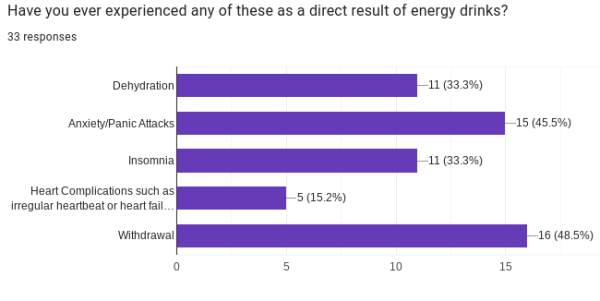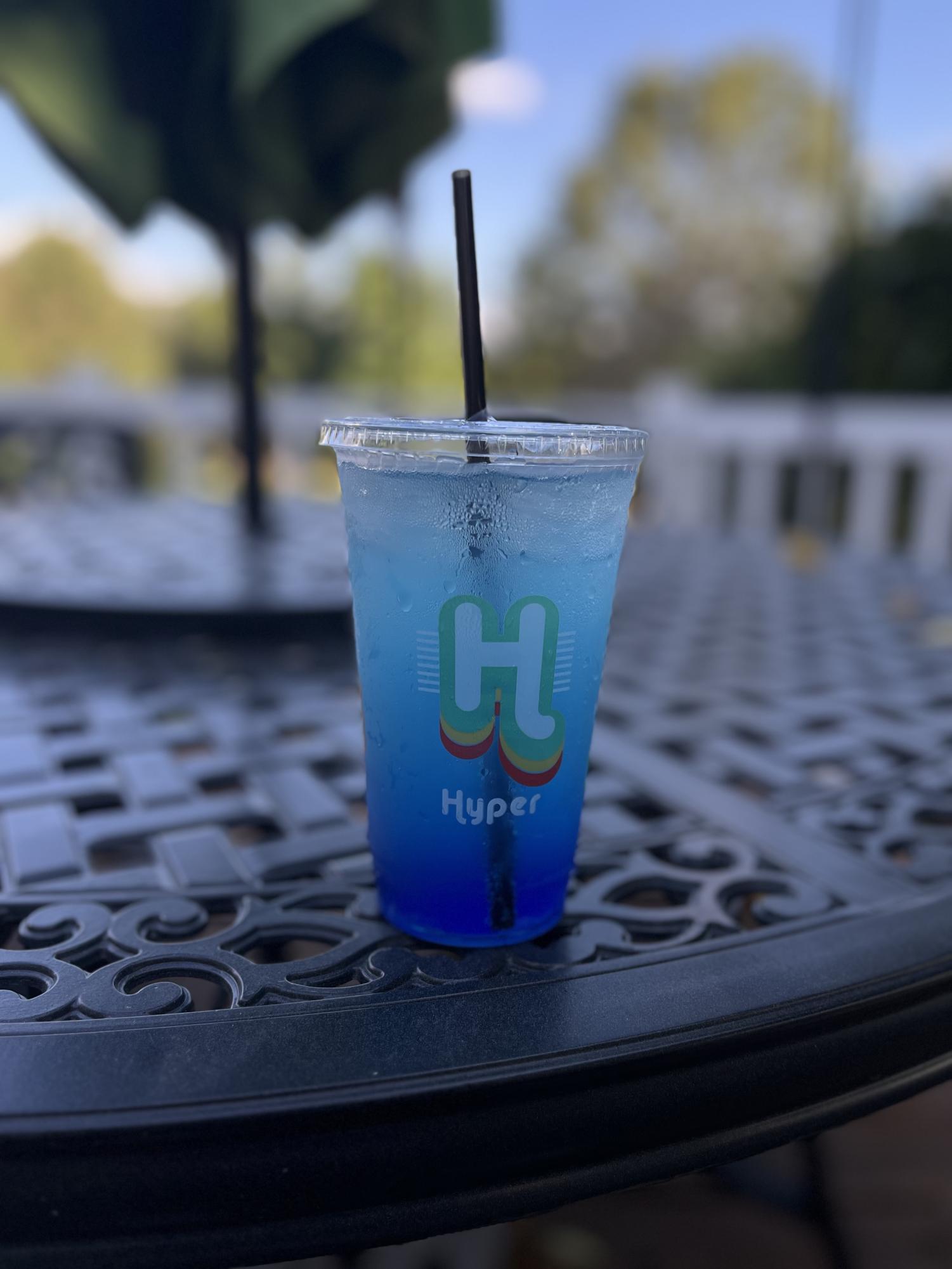I’m in my car. My heart and mind are racing, my hands are shaking on the wheel, my breath is coming in short stabs. The realization hits me as I’m pulling onto the freeway. I’m having a panic attack. The reason? Caffeine.
Nowadays, energy drinks are as common as cigarettes were in the ‘60s. You see them everywhere, at the mall, in the school cafeteria, and even in most people’s homes. There are entire businesses, such as Hyper, whose entire business model is built up around our culture’s never ending need for energy. I had fallen victim to the snares of energy drink companies and my own perceived need for a boost.
This made me wonder: if I had caved in so easily, who else my age had?
I first turned to my coworkers at the Clive Aquatic Center to see what they had to say. Turns out, they fared no better than I had. One manager admitted to having two to three energy drinks a day. This manager also said that when he had gone through a day not having multiple energy drinks, he’d face feelings of withdrawal and overwhelming exhaustion. Another coworker of mine confessed to not being able to focus without an energy drink.
Then, I turned to other students at Dowling. Turns out my coworkers and I are not alone. To gauge people’s thoughts towards energy drinks, I conducted a poll of 33 Dowling students. The poll was voluntary and anonymous, simply asking for any and all personal experience. This poll was conducted over the span of a week. Questions ranged from how many energy drinks people had a day, negative side effects people had experienced from energy drinks, and how they felt energy drinks were viewed in the Dowling community.

The most stunning piece of information from the survey was that 32 of the 33 people that took part in the survey believed that energy drinks were glamorized at Dowling. It seems that a cup from Hyper, or multiple empty cans of Celsius in your locker is seen as a status symbol. Students at Dowling almost seem to be in a competition for how burnt out we can get, while completely ignoring the side effects. Most students who said they had experienced these negative side effects admit that they were caused by a dosage of caffeine more than they usually had.
 Outside of the Dowling community, high schoolers nationwide are in the same boat as us. In a study conducted by Mintel Group Ltd. in 2013, about half of young adults in the U.S. and one third of minor teens had reported using energy drinks. This number has gone up in recent years. A student-led survey from a Michigan high school in 2023 reported that sixty-three percent of their student body regularly consumed energy drinks. Clearly, as our culture grows and develops, high schoolers’ need for energy drinks grows with it.
Outside of the Dowling community, high schoolers nationwide are in the same boat as us. In a study conducted by Mintel Group Ltd. in 2013, about half of young adults in the U.S. and one third of minor teens had reported using energy drinks. This number has gone up in recent years. A student-led survey from a Michigan high school in 2023 reported that sixty-three percent of their student body regularly consumed energy drinks. Clearly, as our culture grows and develops, high schoolers’ need for energy drinks grows with it.
Across the pond, there are restrictions on energy drinks that have not been taken into consideration in the U.S. On a recent school trip to London, my travel mates and I attempted to buy energy drinks from a local supermarket. We were bewildered when the clerk asked us for our IDs. This had never happened to us in the U.S., so we decided to do a little digging. According to NBCnews.com, as of June 12, 2024, the U.K.’s Labor Party has proposed a 10-point action plan to make “the healthiest generation of children ever.” A part of this plan is the ban of energy drink sales to anyone under the age of 16. The Labor Party’s idea behind implementing this plan is to protect kids from the potentially dangerous ingredients used in energy drinks.
Ultimately, the decision is up to the individual. While use of energy drinks has been linked to many negative side effects, energy drinks can be a useful tool for when you need a boost. I personally don’t believe that the benefits outweigh the cost, but everyone needs to ask themselves, is five hours of energy worth the possible lifetime health risks?



